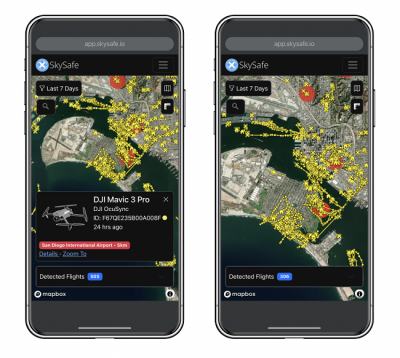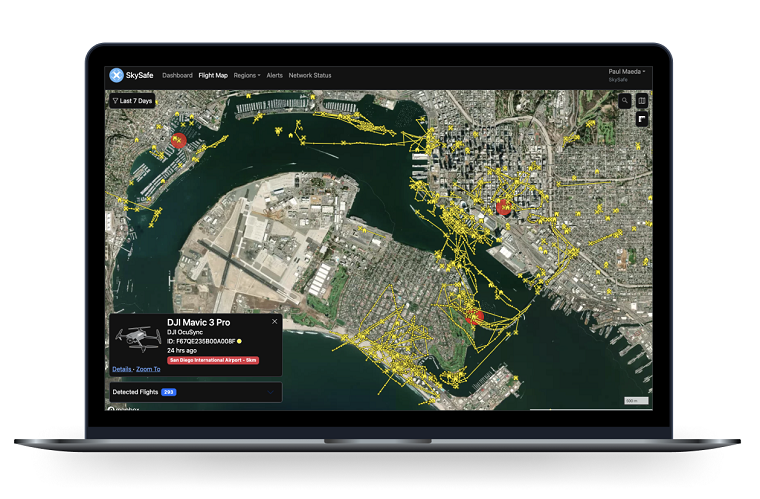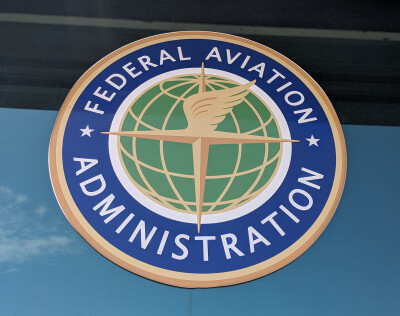Efforts to expand and improve counter-UAS operations in the US took a big step forward with the announcement that SkySafe has been chosen to participate in the FAA’s UAS Detection and Mitigation Testing and Evaluation Program. The partnership aims to find technologies and approaches that will aid in finding and stopping unauthorized uncrewed vehicles near airports and other vulnerable sites. The program also seeks to accelerate the safe integration of UAS in the national airspace.

With the ability to detect most drone manufacturers, SkySafe's technology is vetted and approved for ensuring airspace safety and security and world-class drone forensics capabilities. According to SkySafe CEO Grant Jordan, the collaboration will build on work his company and the FAA have already been doing to advance counter-UAS capabilities. “We’ve been involved with the FAA’s test program at Atlantic City International Airport, and we’ve completed the first phase of that testing,” he reported. “That testing went very well, and now we've signed this contract to extend the work to the next phase.”
For the UAS Detection and Mitigation Testing and Evaluation Program, SkySafe will draw on its expertise in crafting drone airspace awareness solutions. SkySafe can detect “Our focus has been in the RF (radio frequency) sensing space,” Jordan said. “We've spent about eight years building out capabilities for sensing drones by their RF transmissions, primarily on the defense side.”
Adapting this defense-focused work to domestic, commercial operations, Jordan explained, requires new ways of thinking. “We started out
Jordan believes that counter-UAS initiatives like the FAA’s UAS Detection and Mitigation Testing and Evaluation Program could answer these questions and provide benefits for commercial drone operations, public safety, and more. “Much of our thinking is in the direction of that long-term vision of UTM (unmanned air traffic system management). We’re looking at ways to build the basic infrastructure that's needed for that longer term UTM while solving the problems that are currently going on today,” he stated.
To address these issues, Jordan explained, “We
Through this approach, SkySafe will “provide airspace information—that data, that awareness—to facility operators, prisons, airports, stadiums, border protection systems, critical infrastructure, and more,” he said.
Finding solutions to address threats presented by rogue UAVs has long been a focus of Jordan’s work. After graduating from MIT, he served as an Air Force officer, working at the Air Force Research Lab on small UAV testing and counter-UAS development.

“My shop actually ran some of the early counter-UAS testing in the Department of Defense, so I saw all of the very early stuff,” he said. “I really got exposed to how difficult the problem is, and I think we've really seen that borne out over the
In addition to his work at SkySafe, Jordan has been on the Commercial Drone Alliance Board of Directors for six years, working with individuals in both the public and private sectors on a range of drone-related issues. This past September, he offered his expertise and perspectives to attendees at the annual Commercial UAV Expo. As a panelist at the “Security and Counter Drone – Industry Insights” session, Jordan and his colleagues from WhiteFox Defense Technologies, AeroVigilance, Dedrone, and the FAA examined threats to the airspace and how private industry and government agencies can work together to improve counter-UAS efforts.
“There are slight differences of opinion on what the right solutions are, but I think we all see the same problems,” Jordan asserted. “Between regulators, lawmakers, law enforcement, industry, and commercial drone providers, everybody has the same vision. Everybody's pulling mostly in the same direction.”
Part of the shared vision of the various stakeholders, Jordan said, is an understanding that more must be done around law enforcement. “We want to make sure that there can be actual enforcement mechanisms and actual consequences for bad actors,” he stated. “We're kind of in a transition point in the drone industry, where there isn't quite the enforcement we need.”
Jordan said that these enforcement efforts are not currently in a position to manage a massive influx of drones into the national airspace. “For example, the FAA’s LEAP program is relatively understaffed and underfunded, and there's no way they can do the enforcement that would be required if we start to take a step forward in scale with real commercial drone use, with hundreds of drones in the air,” he said. “I don't know how this will be solved long term. We've got big steps to take in that direction.”
Still, with efforts like the FAA’s UAS Detection and Mitigation Testing and Evaluation Program and the commitment of the commercial drone industry to improve counter-UAS systems, solutions to these problems may soon be at hand.
“It's encouraging that the test program has really ramped up, and everyone is working very hard to move things forward,” Jordan enthused. “It’s been fantastic.”















Comments